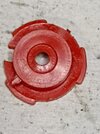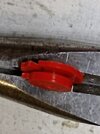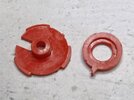throbscottle
Well-Known Member
Has anyone come across, or maybe actually owns, a Vitrex continuity tester of (guessing) 70's or 80's vintage? I ask because I inherited one as part of a kit that was my father in law's, and the wire-end battery contact is completely corroded away. So I'd like to find out what kind of shape it was. Because I like making old stuff work again, obviously.
I know I could just cut out a piece of metal and call it a fix, but the 2 pieces of plastic it was attached to are relatively complicated, so I'd like to re-create it something like the original and attach the wire in the intended fashion if I can.
I know I could just cut out a piece of metal and call it a fix, but the 2 pieces of plastic it was attached to are relatively complicated, so I'd like to re-create it something like the original and attach the wire in the intended fashion if I can.





